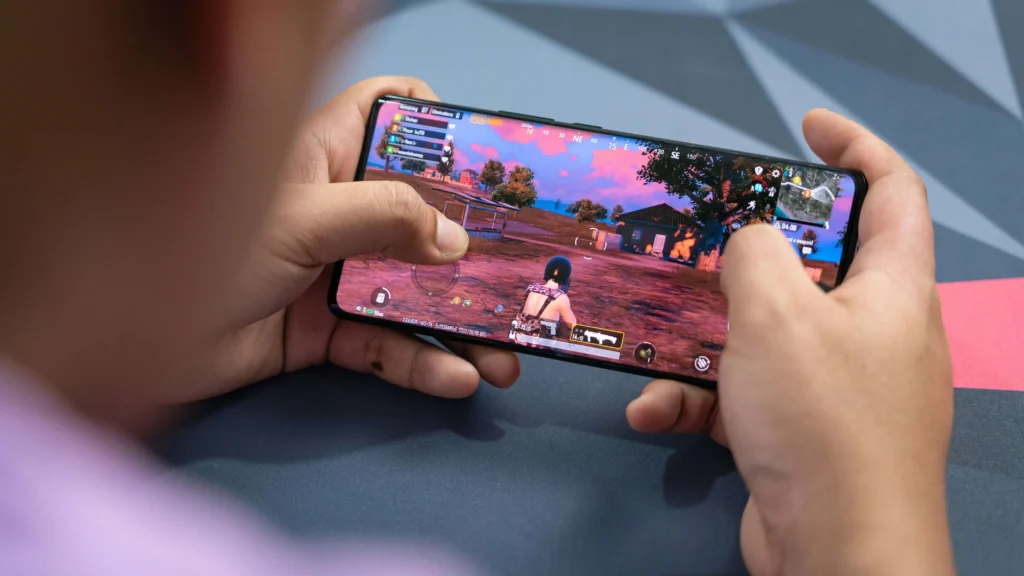
Mobile gaming has evolved from casual time-fillers into a mainstream force reshaping the entertainment landscape. In 2025, it’s no longer just a subset of the gaming industry; it‘s the industry’s biggest growth driver. With billions of smartphones in circulation and faster mobile networks in place, mobile games have reached an audience unmatched by any other platform.
People of all ages, across diverse regions and economic backgrounds, are playing. And not just occasionally, they’re engaging daily, competing globally, and spending real money. From short burst sessions during commutes to immersive multiplayer battles at home, mobile gaming has become an everyday habit.
Mobile Games Are Designed to Suit Modern Lifestyles
The most popular mobile games in 2025 don’t ask for hours of undivided attention. They’re built to respect the realities of modern life, short breaks between meetings, time on the train, or winding down at night. With attention constantly split across work, social media, streaming, and other activities, players value games that deliver engagement without demanding too much.
Streamlined controls and short-level formats are now standard. Whether it’s a puzzle game, strategy builder, or card-based challenge, players can jump in and make meaningful progress in minutes. Studios like Supercell, King, and Playrix lead this design philosophy with sessions that feel satisfying even when brief.
Mobile casino games follow the same model. They continue to grow as part of the broader ecosystem. Games such as blackjack surrender strike a balance between speed and strategy, letting players enjoy quick rounds while still making smart, outcome-based decisions.
Game interactions are often structured around real-life behavior, allowing for morning check-ins, afternoon matches, and evening events. With timed rewards, evolving challenges, and easy re-entry, players stay engaged without feeling pressured.
Social Features Drive Competitive and Cooperative Play
In 2025, mobile gaming isn’t a solo pursuit. It’s powered by social layers that encourage players to connect, compete, and collaborate with others. These elements are no longer optional, they’re foundational to player retention and market growth.
Leaderboards and Clans Add Motivation
Ranking systems, team modes, and seasonal ladders give players a reason to stay active. Whether it’s climbing the top 100 in Call of Duty: Mobile or joining a guild in Clash of Clans, being part of a group adds meaning to each session. Players don’t just chase points; they chase recognition and a sense of community.
Built-In Chat and Matchmaking Foster Community
Text and voice chat, live emotes, and real-time match invites all contribute to deeper connections. Games like Brawl Stars and PUBG Mobile have transformed into social hubs where players maintain friendships, form rivalries, and coordinate gameplay. In many ways, mobile gaming has replaced traditional forums or social media for hobby-based interaction.
Accessibility and Performance Across Devices
The wide availability of powerful entry-level smartphones, combined with efficient game optimization, has removed many traditional barriers to mobile play. Mobile gaming is no longer reserved for flagship phone owners or those with unlimited data plans.
Developers now prioritize performance over ultra-realistic graphics. Titles scale well across devices, using dynamic resolution or simplified assets. This ensures that someone on a two-year-old Android phone can still enjoy competitive experiences without crashes or lag. It’s a key factor in why mobile gaming popularity continues to grow.
Many mobile games now support progress-saving via cloud accounts, allowing users to switch devices without losing data. Offline modes are also common, giving players the option to enjoy single-player elements without a data connection. These features boost trust and convenience, particularly in regions with inconsistent connectivity.
In-Game Monetization Feels More Optional
Today’s mobile gamers are more discerning. They expect free access to quality content, and they resist pushy monetization tactics. Developers have adapted, finding a middle ground between profitability and user experience.
Cosmetics and Battle Passes Replace Pay-to-Win
In 2025, revenue comes from optional purchases like character skins, themed events, and season passes. These upgrades don’t provide unfair gameplay advantages. Instead, they offer personalization and prestige. Players spend because they want to, not because they must. This has improved perception and trust around mobile game economies.
Ads Are More Targeted and Less Intrusive
Intermittent ads still exist, but they’re smarter and better placed. Players are often given a choice: watch a 15-second video for an extra reward or skip it entirely. Some platforms use rewarded ads that actually enhance the gameplay loop. This balance keeps frustration low while supporting free access.

Localized Content Is Reaching Wider Audiences
A major reason mobile gaming popularity is exploding in 2025 due to the push toward culturally relevant and region-specific content. Studios are no longer building for a single global audience; they’re adapting to local tastes.
Games now include multiple language options from the start. Beyond translation, developers create region-based events, characters, and rewards that resonate with specific cultures. For example, seasonal events tied to Carnival give players localized incentives to participate.
Narratives in mobile games are also growing more inclusive. Characters represent diverse backgrounds, and story arcs tackle a wider range of experiences. These shifts help more players see themselves reflected in the games they play, building emotional investment and community.
User Feedback Loops Improve Fast
Another major shift driving the rise in mobile gaming popularity is the speed of updates. Developers actively listen and adapt. Game versions can be pushed live in days, not months, which keeps titles fresh and bug-free.
Frequent Updates Keep Games Alive
Weekly patches, monthly expansions, and seasonal reworks mean players rarely run out of content. Popular games are treated like live services, constantly evolving. Developers use user data and direct feedback from reviews or social platforms to shape these updates in real time.
Player-Centric Design Leads to Loyalty
More studios now beta test features, run polls, and involve users in the development roadmap. This creates a sense of shared ownership. When changes are clearly linked to community suggestions, it deepens trust. Players feel heard, which makes them more likely to stick around and recommend the game to others.
Mobile Gaming’s Role in the Future of Entertainment
With mobile gaming popularity peaking in 2025, the competition to retain attention is fierce. Games can no longer rely on novelty alone. Success depends on staying accessible, social, responsive, and rewarding. Developers who prioritize user experience over gimmicks will continue to dominate charts and grow loyal audiences.
From daily routines to global competitions, mobile games have carved out a permanent place in modern life. As devices continue to improve and content grows more personalized, expect this trend to not just continue, but to define the future of digital entertainment.



